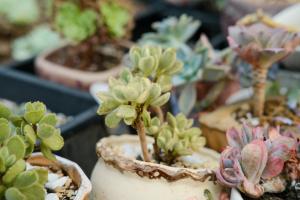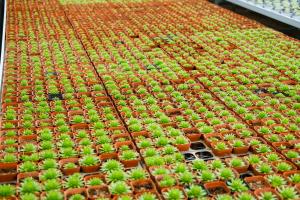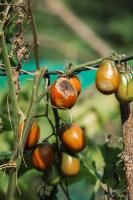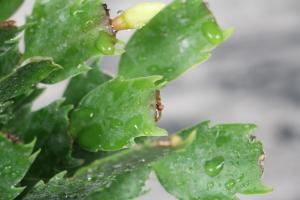Introduction
Cherry tomato plants are popular among gardeners due to their small size and ability to produce an abundance of fruit. However, even the best tomato plants can experience issues such as wilting. If you have noticed your cherry tomato plants wilting, it's important to address the problem as soon as possible to prevent damage to your harvest.
Lack of Water
The most common reason for wilting cherry tomato plants is lack of water. These plants require regular watering to stay healthy and produce fruit. If you live in a hot or dry climate, it's important to check your plants daily for signs of wilting. If your soil is dry to the touch, it's time to water your plants. A good rule of thumb is to water your cherry tomato plants deeply once a week, or more frequently if needed.
Root Issues
If your cherry tomato plant is still wilting after watering, it may be a result of Root issues. Sometimes, the roots of the plant may become damaged or diseased, preventing them from being able to uptake the necessary water and nutrients. This can be caused by overwatering, poor soil quality, or pests such as nematodes. To determine if your plant is suffering from root issues, gently remove it from the soil and inspect the roots. If they appear brown or mushy, it's likely best to replace it with a new plant.
Pest Infestations
Another potential cause of cherry tomato plant wilting is pest infestations. Pests such as spider mites, aphids, and whiteflies can damage plant cells, causing the leaves to droop and the fruit to become deformed. Check your plants regularly for signs of insect damage, and take proactive measures such as using insecticidal soap or neem oil to prevent or control infestations.
Disease
Cherry tomato plants can also suffer from various diseases that cause wilting. For instance, fusarium wilt and verticillium wilt are two common fungal diseases that cause leaves to wilt and turn yellow or brown. Other diseases such as bacterial canker and early blight can also cause wilting and other symptoms. To prevent plant disease, ensure proper plant spacing, avoid overhead watering, and maintain good soil drainage.
Conclusion
In conclusion, there are several reasons why your cherry tomato plant may be wilting. By addressing the underlying cause, you can help your plant recover and continue to produce delicious fruit for your enjoyment. Always ensure that your plants are receiving proper water and nutrients, inspect them regularly for pests and diseases, and take action promptly to address any issues that arise.

 how many times do yo...
how many times do yo... how many planted tre...
how many planted tre... how many pine trees ...
how many pine trees ... how many pecan trees...
how many pecan trees... how many plants comp...
how many plants comp... how many plants can ...
how many plants can ... how many plants and ...
how many plants and ... how many pepper plan...
how many pepper plan...






























